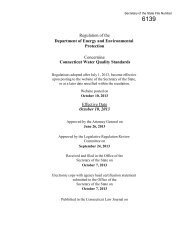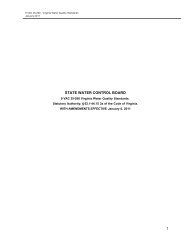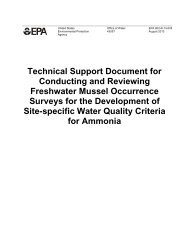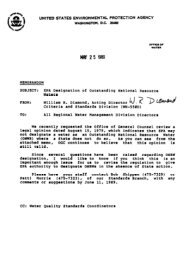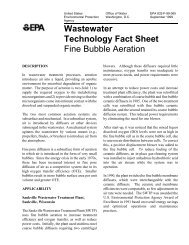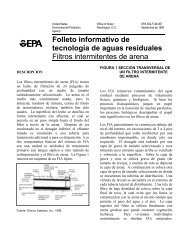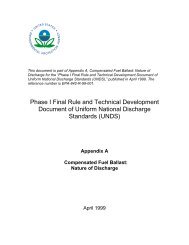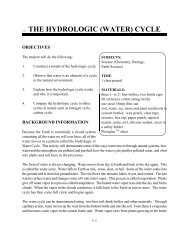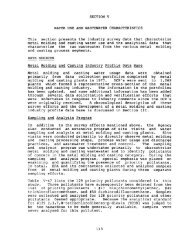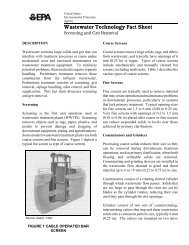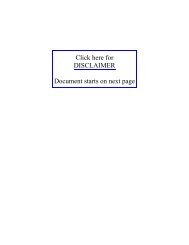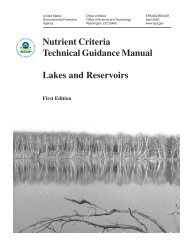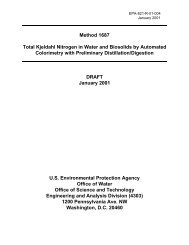Method 300.0, Rev. 2.1 - Water - US Environmental Protection Agency
Method 300.0, Rev. 2.1 - Water - US Environmental Protection Agency
Method 300.0, Rev. 2.1 - Water - US Environmental Protection Agency
You also want an ePaper? Increase the reach of your titles
YUMPU automatically turns print PDFs into web optimized ePapers that Google loves.
5.1 The toxicity or carcinogenicity of each reagent used in this method have not<br />
been fully established. Each chemical should be regarded as a potential health<br />
hazard and exposure should be as low as reasonably achievable. Cautions are<br />
included for known extremely hazardous materials or procedures.<br />
5.2 Each laboratory is responsible for maintaining a current awareness file of<br />
OSHA regulations regarding the safe handling of the chemicals specified in<br />
this method. A reference file of Material Safety Data Sheets (MSDS) should be<br />
made available to all personnel involved in the chemical analysis. The<br />
preparation of a formal safety plan is also advisable.<br />
5.3 The following chemicals have the potential to be highly toxic or hazardous,<br />
consult MSDS.<br />
5.3.1 Sulfuric acid (Section 7.4)<br />
6.0 EQUIPMENT AND SUPPLIES<br />
6.1 Balance -- Analytical, capable of accurately weighing to the nearest 0.000l g.<br />
6.2 Ion chromatograph -- Analytical system complete with ion chromatograph and<br />
all required accessories including syringes, analytical columns, compressed<br />
gasses and detectors.<br />
6.<strong>2.1</strong> Anion guard column: A protector of the separator column. If omitted<br />
from the system the retention times will be shorter. Usually packed<br />
with a substrate the same as that in the separator column.<br />
6.2.2 Anion separator column: This column produces the separation shown<br />
in Figures 1 and 2.<br />
6.2.<strong>2.1</strong> Anion analytical column (<strong>Method</strong> A): The separation shown in Figure<br />
1 was generated using a Dionex AS4A column (P/N 37041). An<br />
optional column may be used if comparable resolution of peaks is<br />
obtained, and the requirements of Section 9.2 can be met.<br />
6.2.2.2 Anion analytical column (<strong>Method</strong> B): The separation shown in Figure 2<br />
was generated using a Dionex AS9 column (P/N 42025). An optional<br />
column may be used if comparable resolution of peaks is obtained and<br />
the requirements of Section 9.2 can be met.<br />
6.2.3 Anion suppressor device: The data presented in this method were<br />
generated using a Dionex anion micro membrane suppressor<br />
(P/N 37106).<br />
6.2.4 Detector -- Conductivity cell: Approximately 1.25 µL internal volume,<br />
(Dionex, or equivalent) capable of providing data as required in<br />
Section 9.2.



